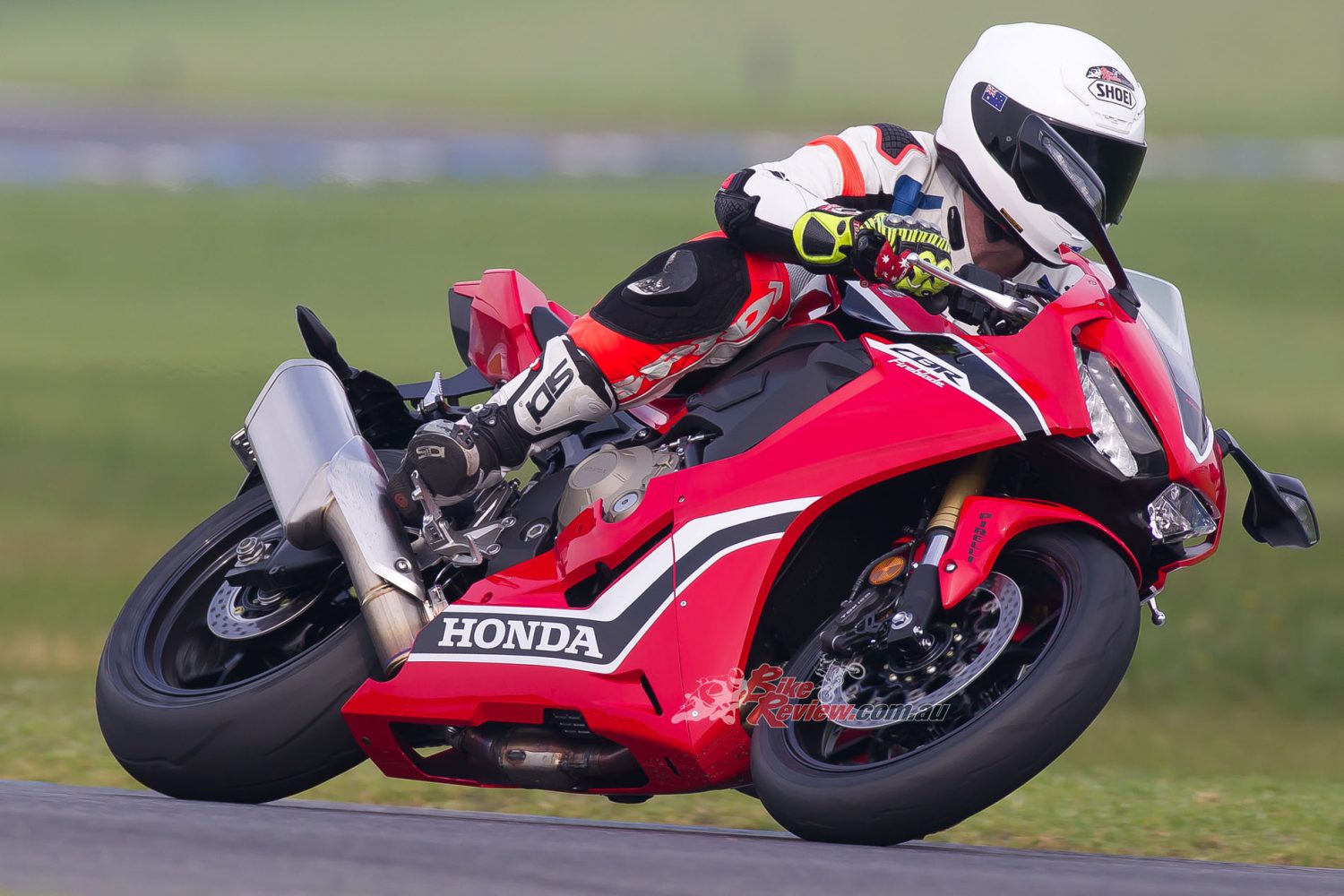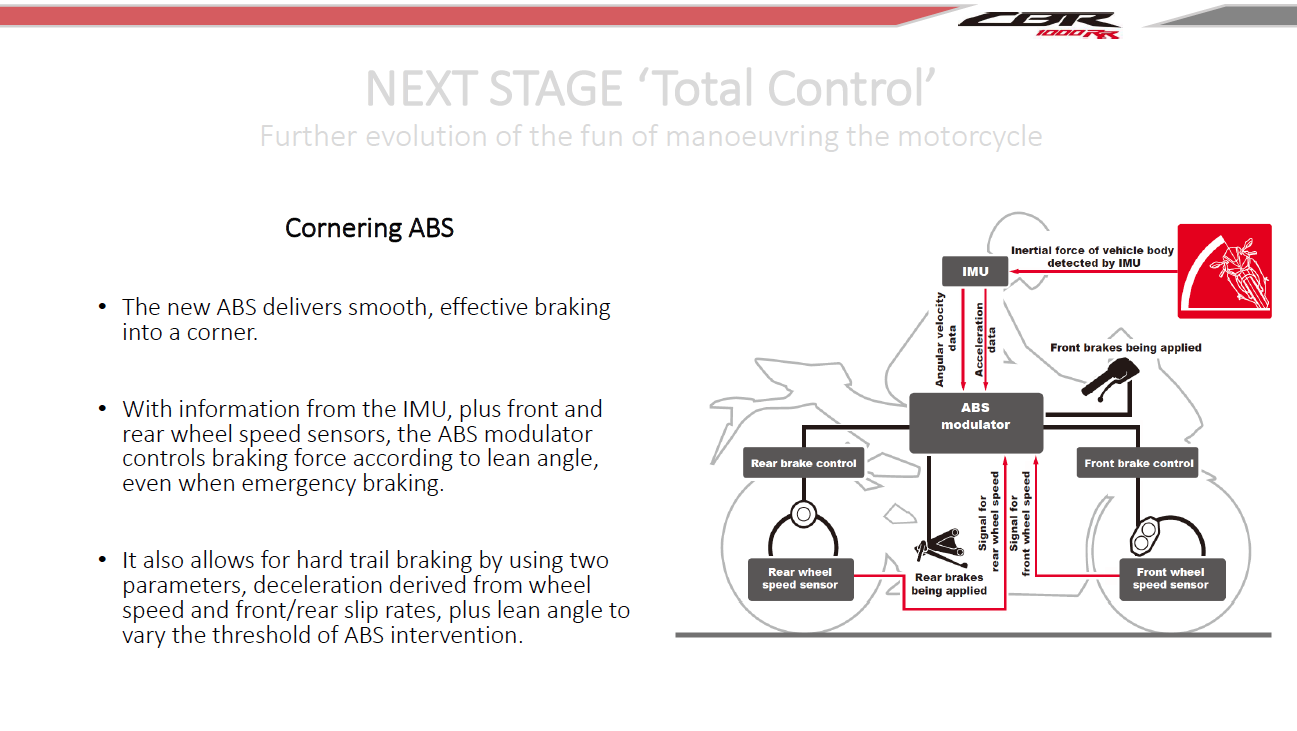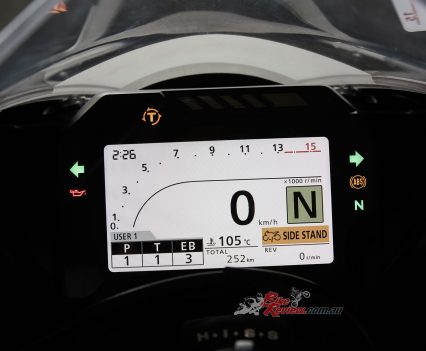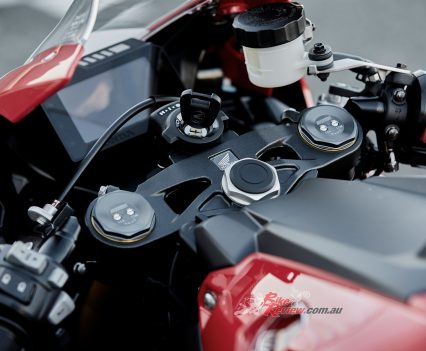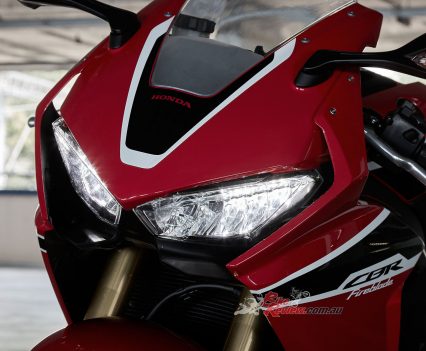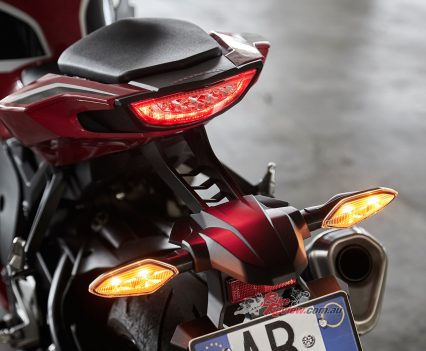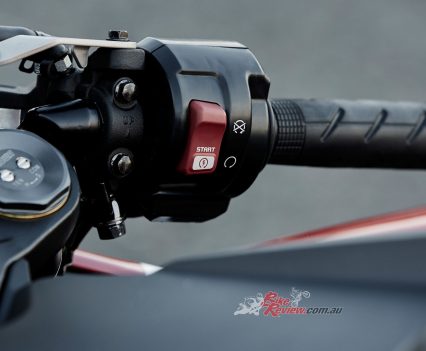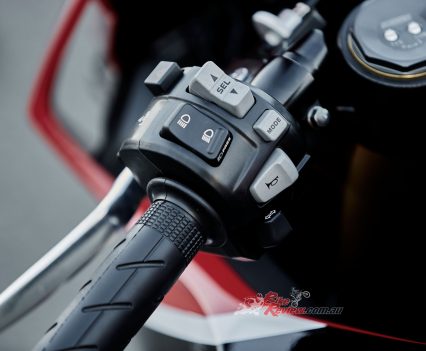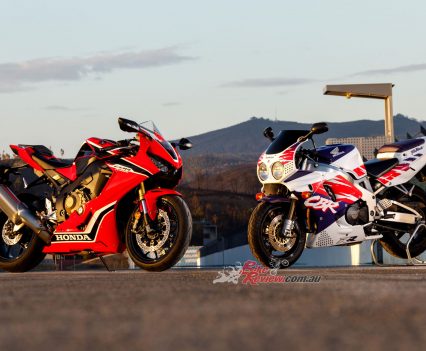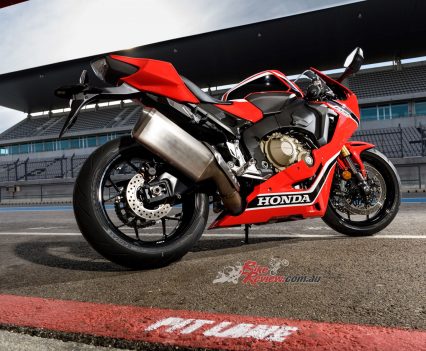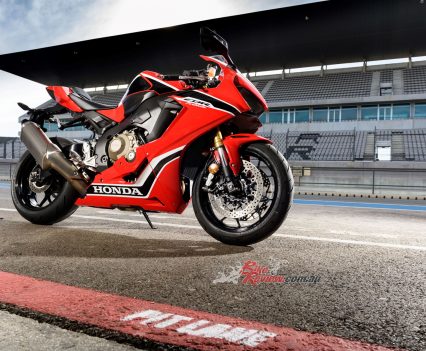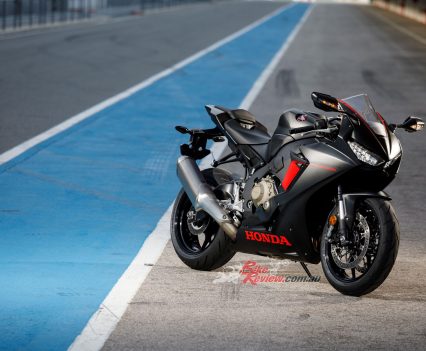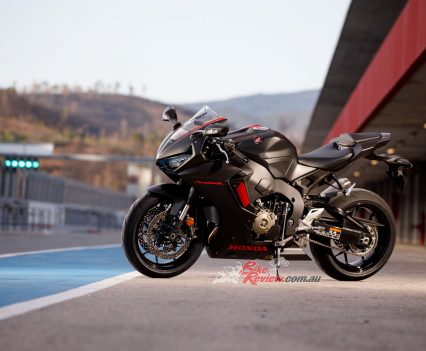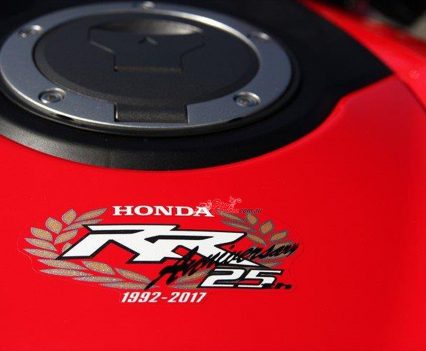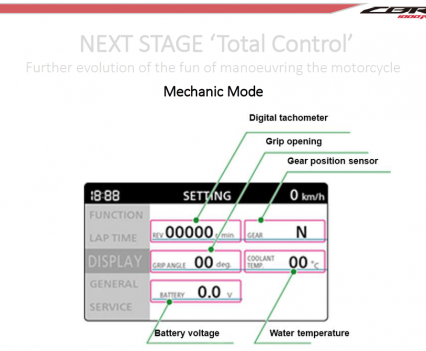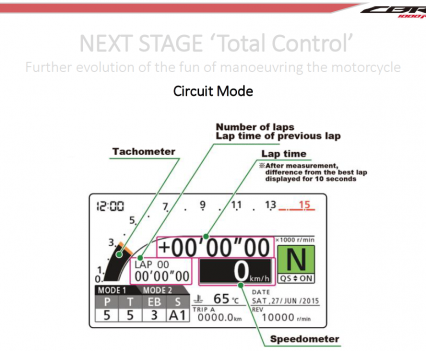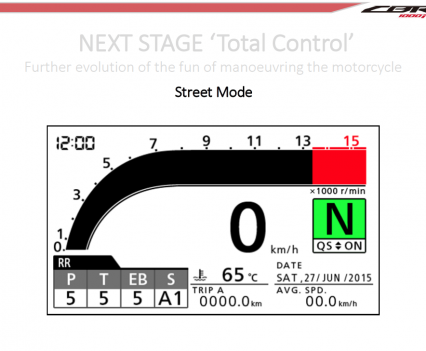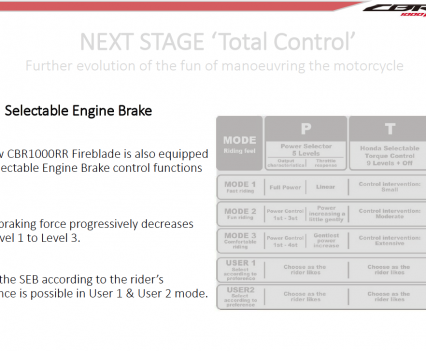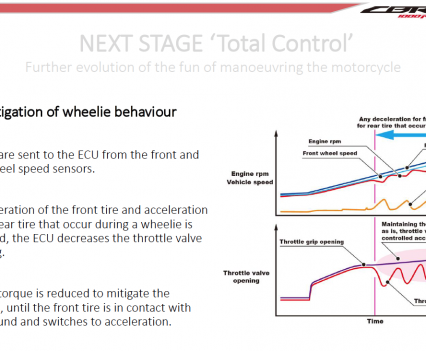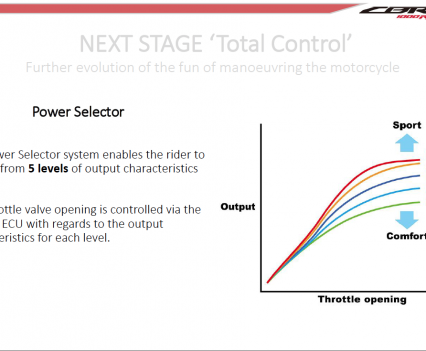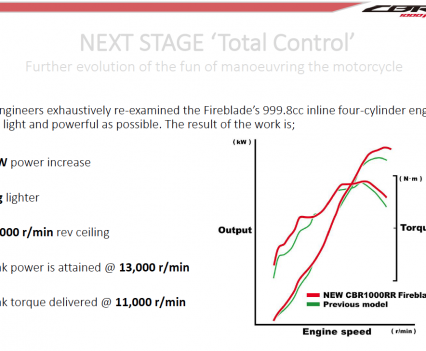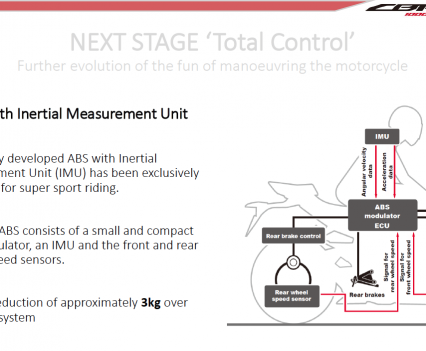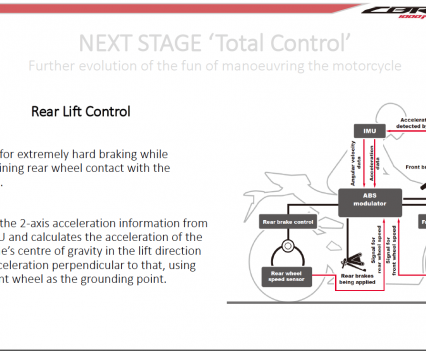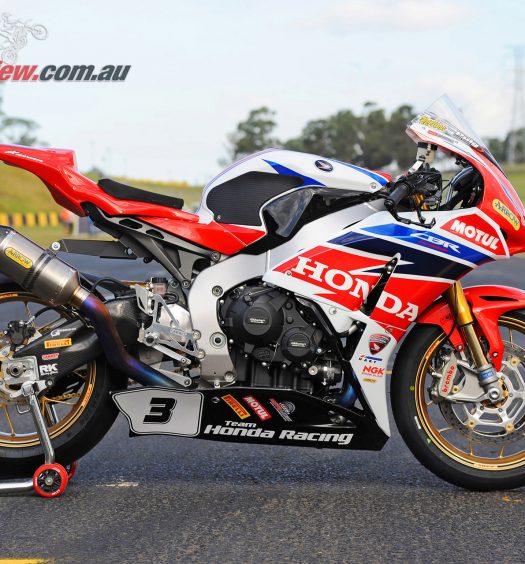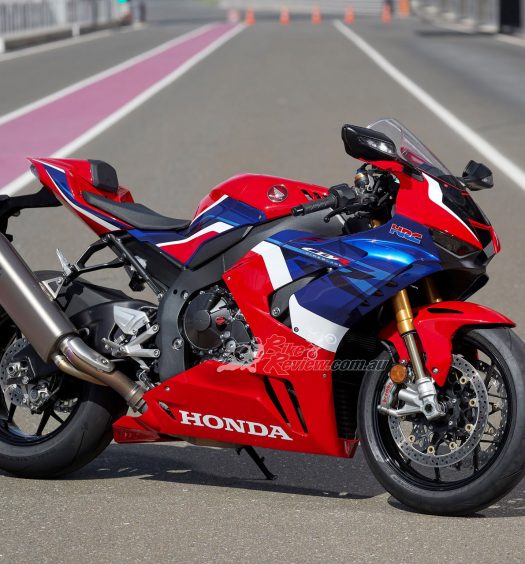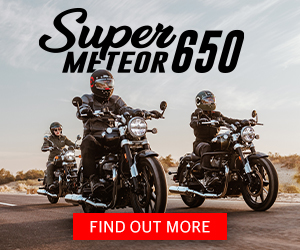The all-new CBR1000RR Fireblade has arrived Down Under and over 90 per cent of the bike is new. Here is our 2017 Honda Fireblade Review... Test: Jeff Ware
It has been a long wait for Fireblade fans but has the wait been worth it? Under the restyled bodywork, the basics remain – the geometry, wheelbase, engine geometry and suspension are not changed – when you are onto a good thing…
But there has been plenty redesigned within those parameters to reduce weight and increase power, all while adding modern electronics. So in short, Honda can be forgiven, because it is a weapon!

The 2017 CBR1000RR Fireblade has the same sweet chassis geometry numbers as before, but thanks to a diet and more power and torque, it is now closer to a racebike than ever before.
Without sounding like a broken record, the first and early Fireblade models blew the minds of sportsbike riders all over the world. The first CBR900RR was off the planet. Those early generation Blades were way ahead of the opposition and they were so appealing to so many of us.
In fact, even now, 20-years since I first saw one, my own daily ride bike is a 1995 Tiger Stripe Fireblade. I love it! What I really liked about those early Fireblades is that they were designed and built for the street rider only. There was no racing category they complied with and Honda had the RC45 for SBK, then the VTRs.
The early Blades were the ultimate street sportsbike. However, as superbike rules moved on from FIM specification, the Fireblade became more and more of a superbike and less of a street sportsbike, just like all of the other machines in this category.
However, it always remained the most versatile of the 1000cc bikes on the road and that is one reason (along with sharp pricing) Honda got away with strong sales for so long all while falling behind the technology race.
It is not a complaint, as we now get true superbike performance and this bike is the closest Honda have given us to a racebike than ever before, with a road friendly yet track capable electronics package thrown in.
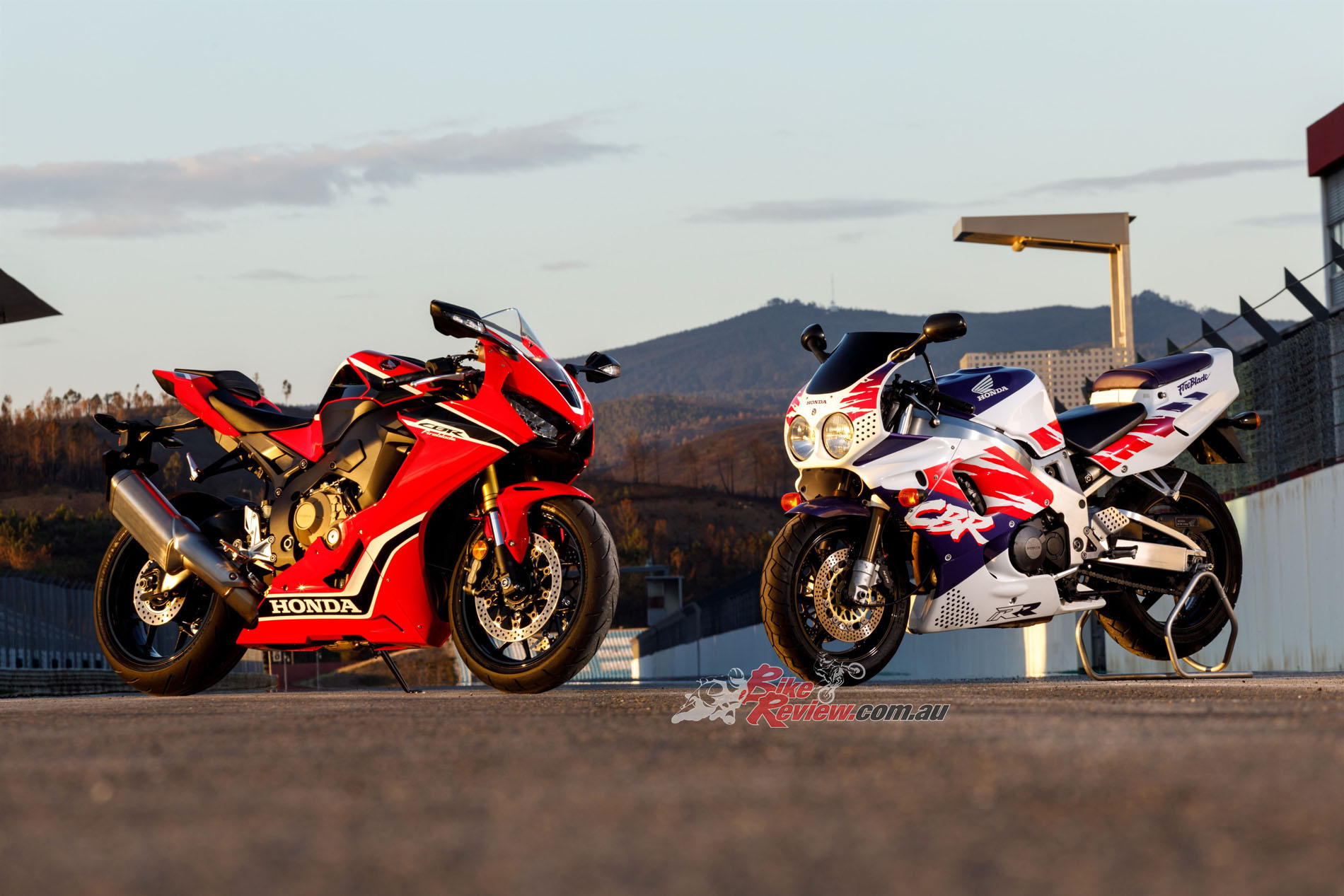
Phwoar… now that is a picture that should get any red blooded sportsbike rider drooling. The mighty original Blade with the all-new generation. Pure eye candy.
The bike is 15kW lighter and the engine is 8kW more powerful at 141kW and there are a huge range of changes as you can read in the technical breakout. Over 90 per cent of parts are revised or new.
The Australian Press Launch was held at Phillip Island mid Autumn, which meant we had dry weather but cool temperatures. The track was also grubby, with dirt patches on corner apexes and oil spills all over the place, so the electronics really did come in handy.
Sadly, all the good bits were forgotten as soon as the Honda representative mentioned that there was no quickshifter. Yep, you read that right, there is no quickshifter despite every other electronic goodie possible, the most basic and expected (even LAMS bikes have them these days) part was missing. I was a bit speechless, but, I had the opportunity to ride a bike with the $600 add-on fitted. Thankfully!
The bikes were really new, with between 50 and 100km on the clock. Tyres fitted for the day were Pirelli Supercorsa SP, a really good street sportsbike tyre that can do track days.
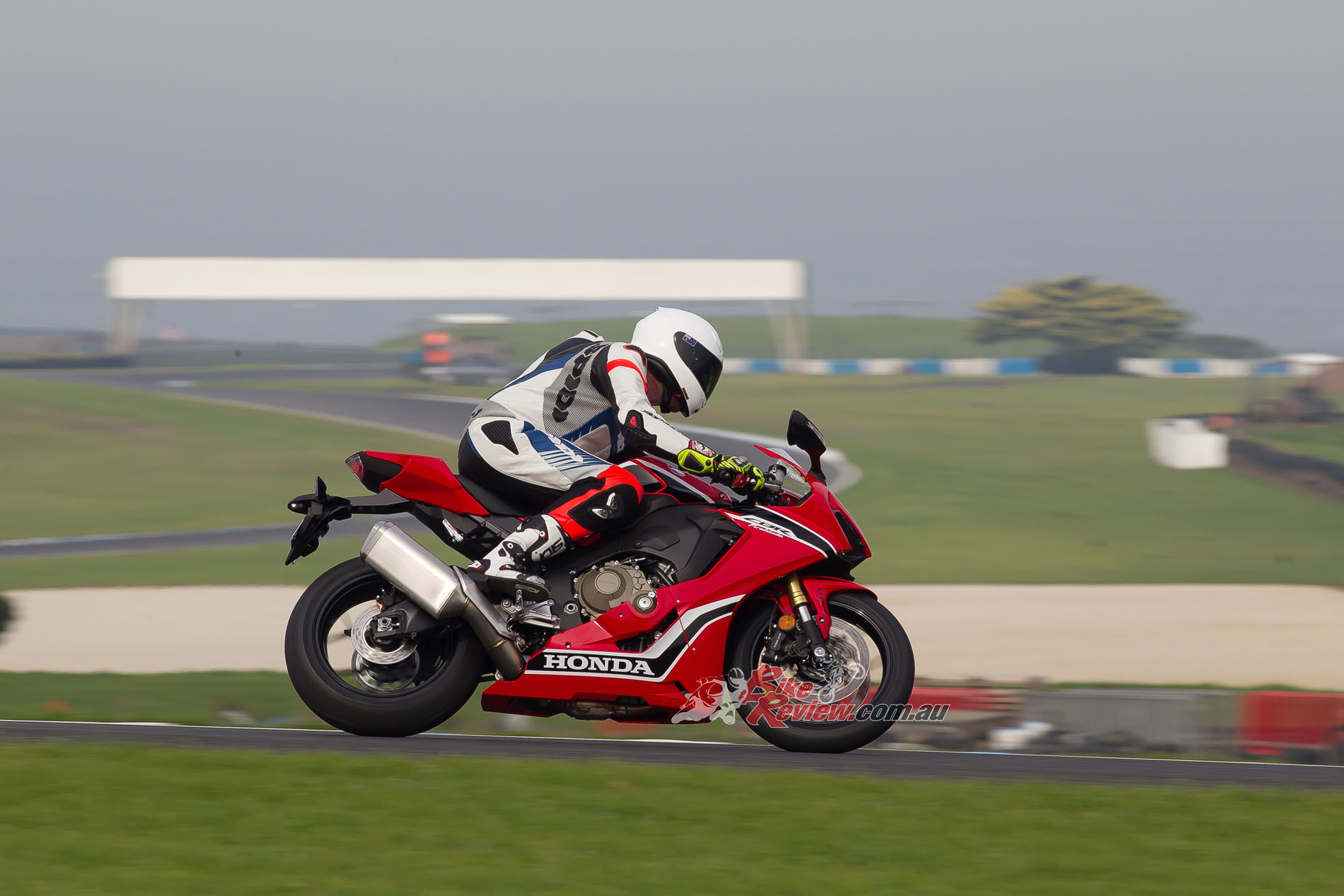
The Fireblade turns accurately and intuitively whether on the brakes or on the gas. It is a truly glorious chassis with good suspension support.
2017 HONDA CBR1000RR – THE RIDE
I hop on the bike for my very first session and the first thing I think is, ‘How will I fit on this?’. The bike is tiny. I mean really tiny. Although the chassis dimensions match the previous model, the tiny, tiny screen and fairing make the bike feel more like a supernaked with a small flyscreen fitted than a sportsbike.
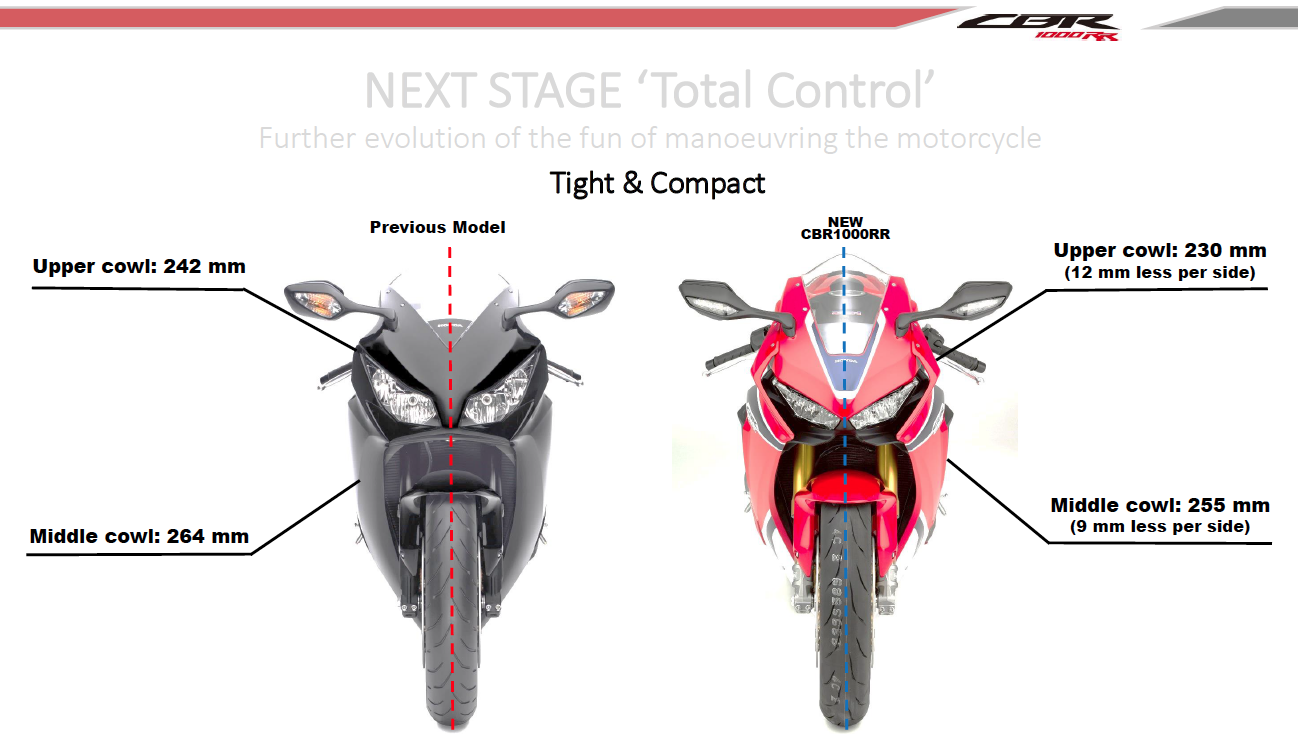
The Fireblade is really small to sit on and does take time to adapt to. On the road I would go for a taller screen and lower the footpegs. Check out the changes above.
I fire the bike up and head down pit lane. I have the bike in Mode 1, the most powerful mode, which is as Honda set the bikes. With no tyre warmers and a cool track, it is a warm-up session. Initially I struggled. No quickshifter meant the bike felt old fashioned at first no matter how trick the other electronics are, the gearlever and throttle are the first points of contact.
Also, the bike is a tad small for me. I’m not huge, I’m 185cm and 90kg, and I have no hope of fitting behind the screen or behind the fairings, and it was making life hard out there. The only part of the track I felt comfortable was in the middle of the turn at full lean. Aside from that I felt like a gorilla sitting on an orange. But as the day went on and I got used to the bike, it all clicked and made sense. This beast is built for one thing and that is to be ridden at or near the limit on a racetrack and that is where it all worked.
For the second session I tried Mode 2, as the track was dirty and slick. Mode 2 is the middle power mode, which I really liked in these conditions. The Throttle-By-Wire connection was not perfect, no Ride-by-Wire system is yet, but in these conditions the electronics gave me so much confidence. I could open the throttle early and let the rpm and power build without fear of getting spat off.
The HSTC (traction control) was really intuitive and not at all intrusive. Despite the lack of grip the cornering ABS went unnoticed. In fact, this was the case all day. I was concerned also that the rear wheel lift control would cause the bike to run off the track under hard braking into corners like Honda and MG, as it releases front brake to drop the rear wheel back down, but this was not the case at all unlike on other 1000cc superbikes I have ridden with the same feature.
Electronics change engine character so much and like all 1000cc superbikes now the engine feels dumbed down when getting on the gas, taking some of that old school grunt away that used to be so much fun, particularly on the Blade. However, it’s 2017 and we now have different engine characteristics designed to A) win races and B) meet Euro4 emissions. Doesn’t feel much faster than the old model but the reduction in weight is where the new performance comes from more than anything.
It’s a cracker of an engine still, and I was seeing just over 290km/h in fifth gear or sixth, it didn’t matter which, at the end of Gardner Straight. Interestingly, with HSTC on I was getting more top speed than with it off, despite the throttle connection being better with the HSTC off. This shows how the bike can put the power down better than a journalist!
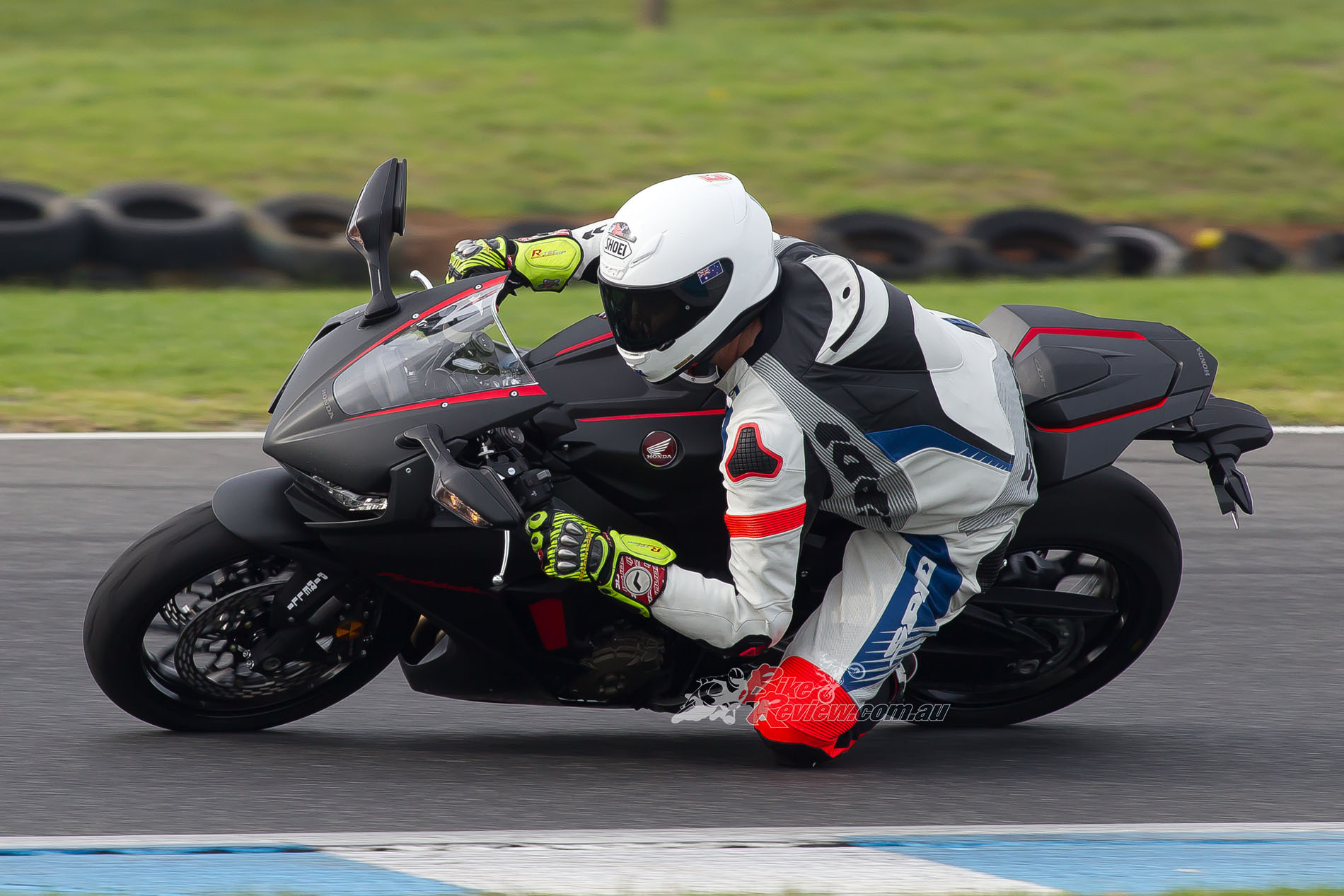
Mode 2 was fantastic in the early morning cold and slippery conditions. I was extremely impressed with the HSTC and the way it intervened with such finesse. The bike in general made me feel incredibly confident in the sketchy conditions.
For the third session I wanted to try the Mode 3 setting, which is for rain or slippery conditions, to see how it was. I did three laps and found it fantastic as I purposely pushed the bike into the electronic intervention boundaries. In this mode the throttle is really soft, with nice soft power delivery and maximum HSTC intervention. Although this was a track test, it was clear that this mode would be a great thing to have up your sleeve on the road in winter or in heavy rain.
After three laps I switched back to Mode 1 to push hard and focus on the chassis. Lapping in the low 1:42s bracket the Blade came alive. The engine now had an extra 140km on it also, and felt looser. With the minimum HSTC intervention, a more aggressive throttle and the lowest SEB (engine braking) the CBR was on rails and those glorious geometry numbers the CBR has always been worshiped for made the experience a good one.
I was grinning from ear to ear when I came in from the session. Turn-in is inch perfect on or off the brakes or gas, and the CBR really goes just where you look, in a flash. It is incredibly nimble and change of direction is very impressive. Suspension is basic, particularly the standard Big Piston Forks, but there was plenty of support within the standard adjustment range. However, for the price there are some bikes with higher specification forks.
Honda have put weight in the right areas as the bike really is a featherweight in the direction changing department and that was the stand-out for me. Off turns I would have liked more support in the rear as the bike was sitting low but I am a heavy bugger at 90kg in gear.
The footpegs are a bit high for my liking and I would lower those if I owned one. I would also pop a taller screen on, as I was having trouble getting behind the fairing on the chute and in other fast areas. Once in a turn though, the bike felt natural but more like a small capacity bike than a superbike, which is amazing.
The TFT dash is busy but easy to read and has fantastic features you can read about in the tech section, and navigating is also easy once you understand it and take a few moments to learn the system.
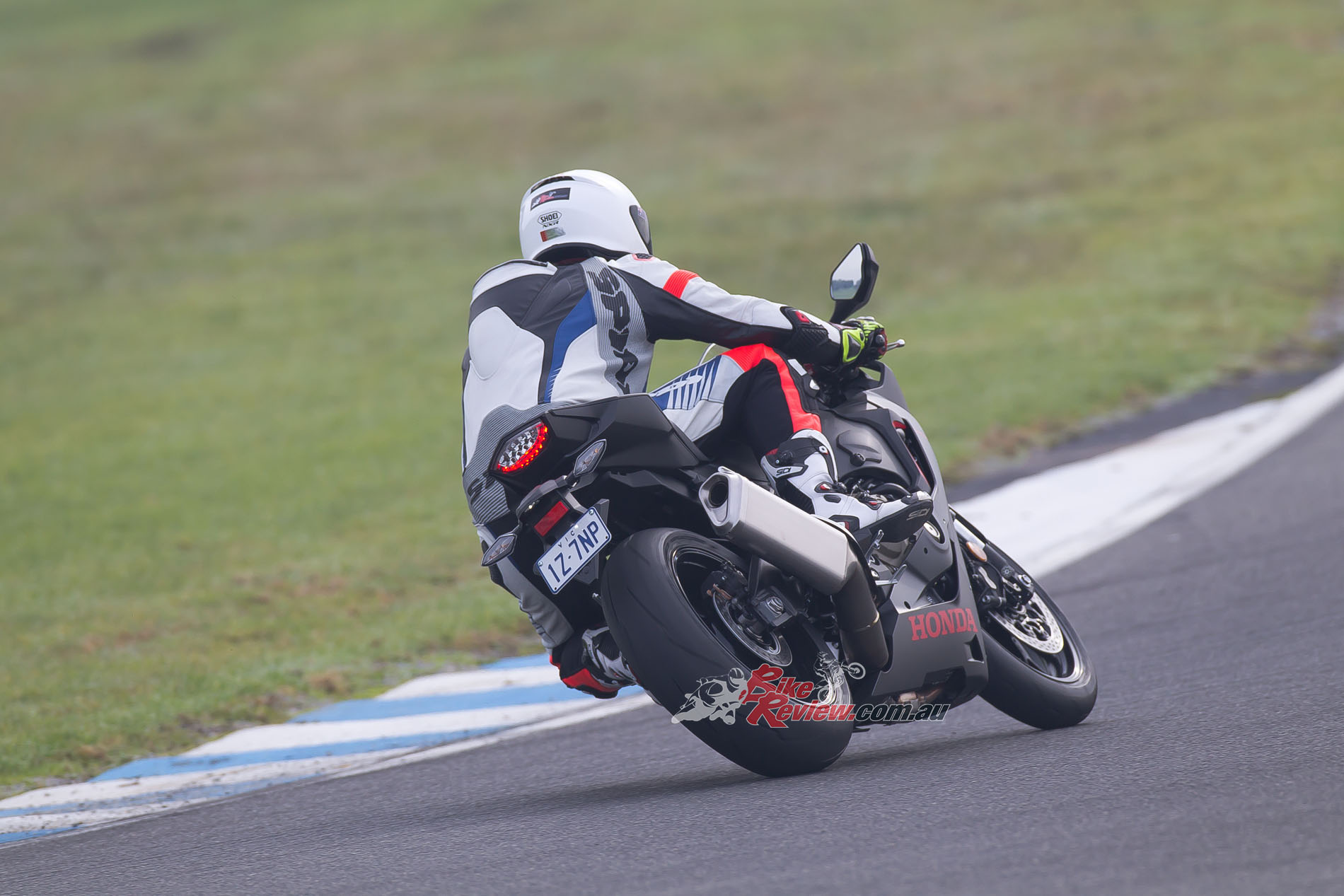
That exhaust might meet Euro4 but check out the video to hear how loud it is. It sounds bloody awesome! It also looks good, which is rare these days!
For my final outing I scored the bike with the quickshifter. I cut a few laps in Mode 1 and as expected, the quickshifter is a must-have item. Don’t even think about buying a Fireblade without ordering the plug and play up and down shifter. It is absolutely fantastic and transforms the bike to a more modern one, and allows the rider to concentrate on the riding more. It’s tops.
One thing I did notice with the quickshifter, it gets the revs spot on into turns and I was carrying good speed in. This highlighted a bit of a lack of initial bite from the front brakes. They do need a good squeeze also and are not on par with the Brembo items fitted to some of the competition.
After a few laps in Mode 1 I saved the best until last and switched everything electronic off aside of course from the non-switcheable ABS. The bike came alive. The throttle connection was 30 per cent better and the power was aggressive and instant. The chassis danced to a more lively beat and that old Fireblade grin appeared in my helmet. Oh yeah, it was awesome…
Overall I was really impressed with the new Blade and can’t wait to road test the bike as soon as it is available. I feel it’ll make a fantastic road sportsbike despite the racing bones and there are plenty of genuine accessories available… Stay tuned!
In the meantime get to your local Honda Dealer and also check out the official Aussie Fireblade Site and book a test ride, also check out the great finance deals.
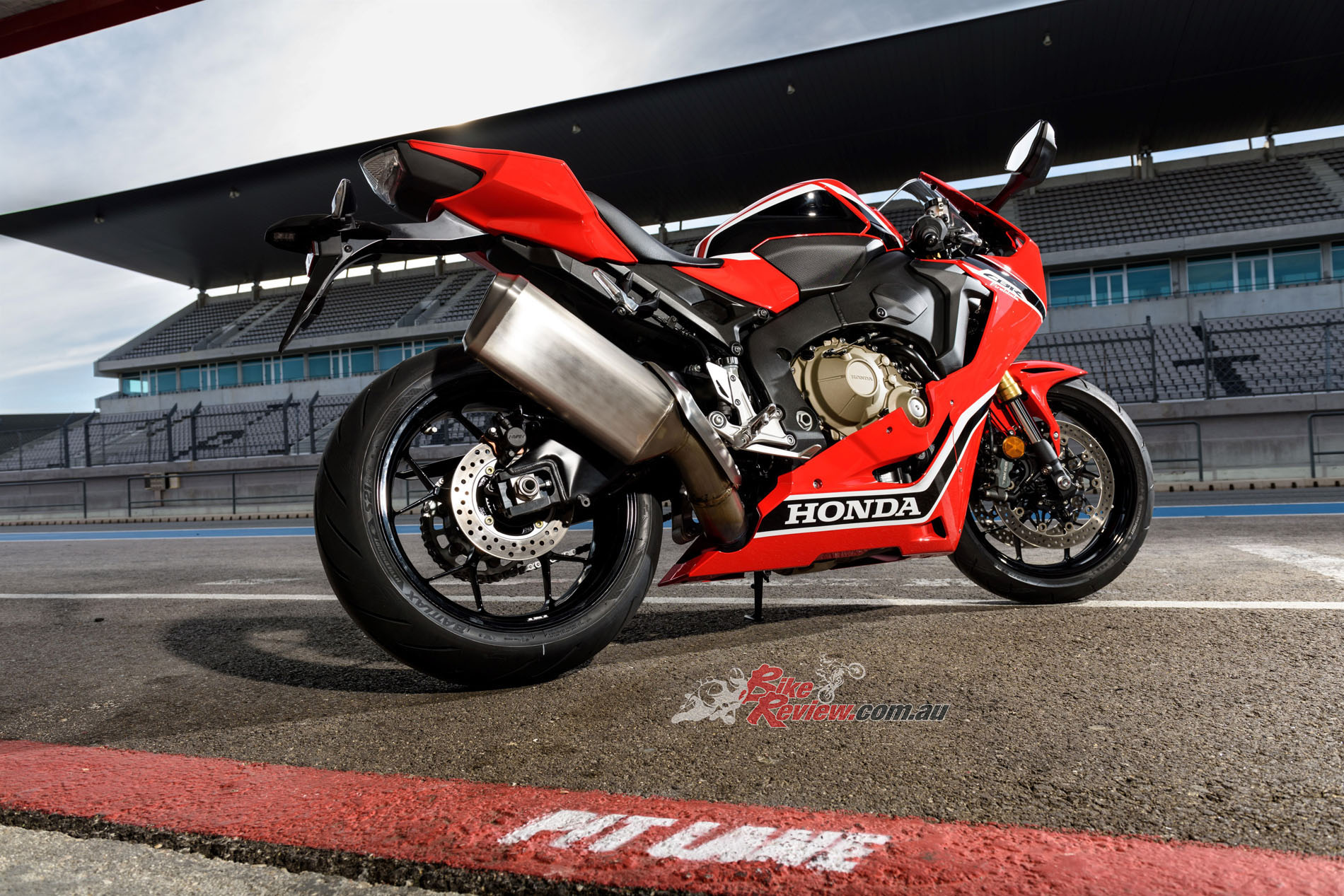
From any angle the Blade looks stunning. The minimal fairing exposes the beautiful engine and frame. And those wheels look seriously trick.
TECH TALK
The 2017 CBR1000RR has ad 90 per cent of the previous model’s components revised or replaced. Starting with the chassis, the same geometry and fundamental design is retained but the frame walls are thinner, saving 300g, and the sub-frame is also redesigned to save 600g and the swingarm redesigned to save 300g. The forks are still standard Showa Big Piston Forks, with no inner tube coating aside from chrome, and are three-way adjustable.
The shock is a Showa Balance Free Cushion item also three-way adjustable. The front calipers are new Tokico radial-mount items with no hangar pins, making them 150g lighter. Improved brake pads are also fitted. The Y-Spoke wheels are new five-spoke items, and are 100g lighter each.
The bike has been completely restyled, with the theme of ‘light and dynamic’ the top of the designers lists. The upper cowl is 12mm narrower on each side and the lower cowl is 9mm narrower on each side. The cowl has been, in Honda’s words, miniaturised to provide only the minimum protection required, and it truly is tiny. Yaw movement has been reduced by the more compact fitment, improving nimbleness.
The previous engine has had a complete revision, increasing power by 8kW with peak torque delivered at 11,000rpm and power at 13,000rpm. The rpm increase is 750rpm, thanks to revisions to the valve train. Cam timing is also changed for 2017. The airbox is all-new and the throttle-bodies are up in size from 46mm to a whopping 48mm. The engine is 2kg lighter than the previous unit, thanks to magnesium engine covers and sump. The exhaust system, with new Titanium muffler, is 2.8kg lighter than before. The clutch is now die-cast and lever load has decreased by 17 per cent.
The new ABS and IMU is designed for sports riding and the entire ABS system weighs 3kg less than the previous model. With information from the IMU plus the front and rear wheel speed sensors, the ABS modulators controls brake force according to lean angle.
The Fireblade is now equipped with Throttle By Wire, the same as that fitted to the RC213V-S. The conventional throttle cables are gone, replaced by an accelerator position sensor in the right-hand switch block. There are five levels of power output to choose from, as well as nine levels of traction control called Honda Selectable Torque Control.
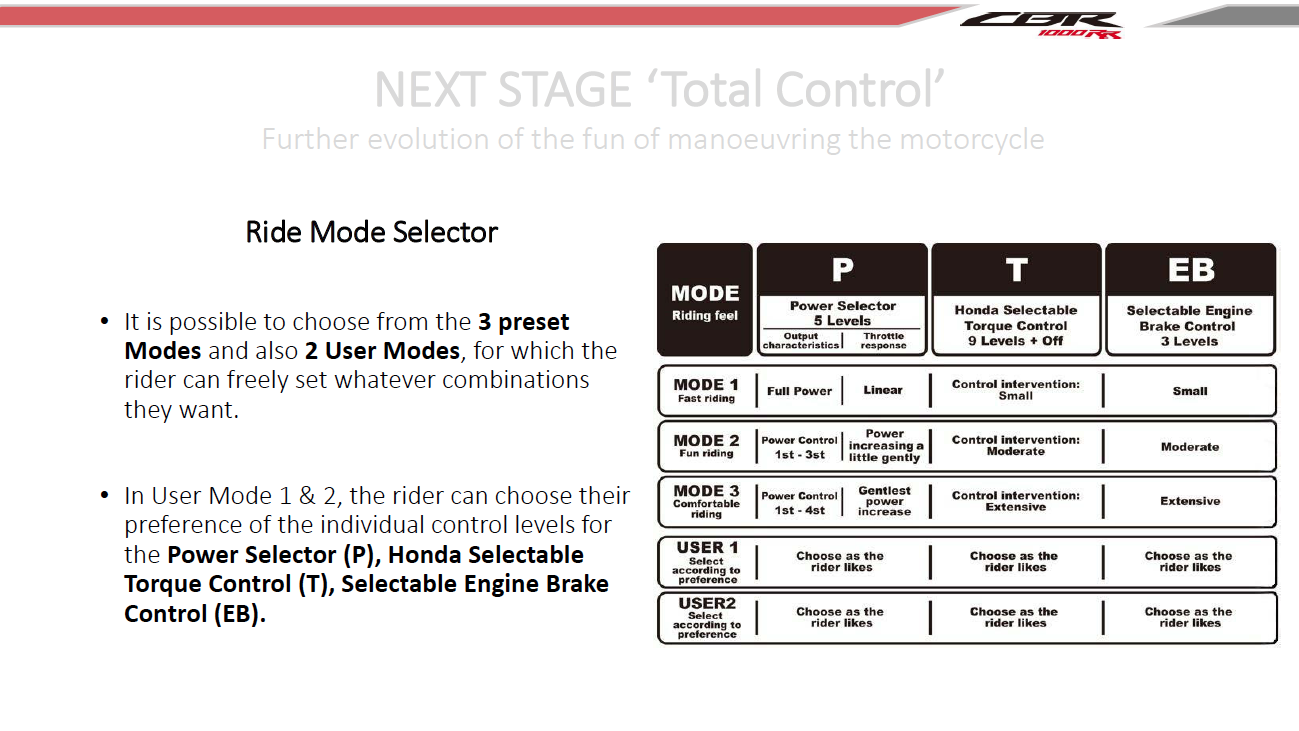 You can also turn the HSTC system off. There is also wheelie control (mitigation of front wheel behavior). The new Fireblade also has Selectable Engine Brake SEB. There are 3 levels of engine braking available. There are also 3 pre set rider modes to choose from (see diagram in gallery).
You can also turn the HSTC system off. There is also wheelie control (mitigation of front wheel behavior). The new Fireblade also has Selectable Engine Brake SEB. There are 3 levels of engine braking available. There are also 3 pre set rider modes to choose from (see diagram in gallery).
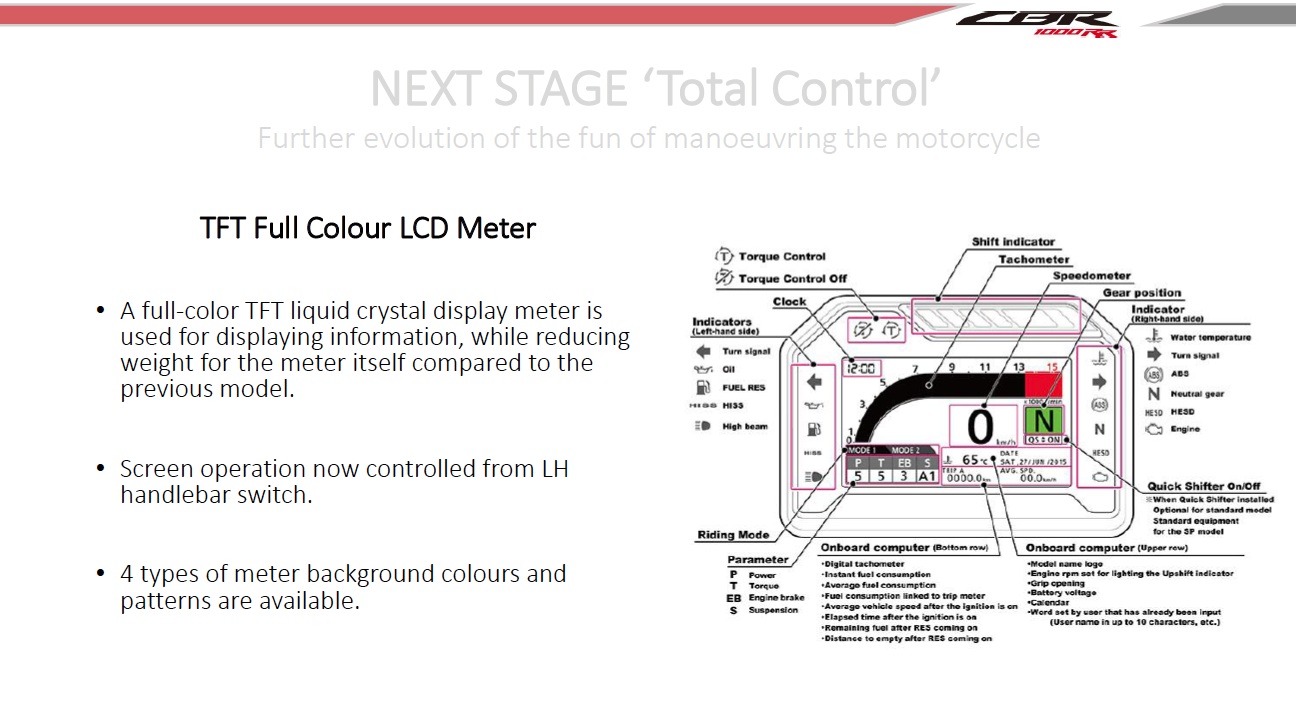 Other goodies include a super trick full TFT full colour LCD display dash with the menu navigated from the left switchblock. There is a Street Mode and a Circuit Mode (as well as mechanic mode).
Other goodies include a super trick full TFT full colour LCD display dash with the menu navigated from the left switchblock. There is a Street Mode and a Circuit Mode (as well as mechanic mode).
The lights are LED, front, rear and indicators.
2017 Honda CBR1000RR Fireblade Specifications
Price: $23,400 + ORC
Dry weight: 196kg
Fuel capacity: 16.2L
Engine: 999cc liquid-cooled four-stroke, 16-valve DOHC inline four-cylinder four-stroke, 76 x 55mm bore x stroke, 13:01 compression, PGM-DSFI fuelling.
Gearbox: Six-speed, no quickshifter
Clutch: Wet multi-plate slipper, cable actuation
Frame: Diamond – aluminium twin-spar.
Rake: 23.21°, Trail: 97mm
Suspension: 43mm inverted Showa Big Piston Fork adjustable for preload, compression, rebound, 120mm travel. Unit Pro-Link Showa Balance Free shock three-way adjustable, 120mm travel.
Brakes: Tokiko 320mm calipers and rotors (f), Nissin caliper and 220mm rotor (r), radial pull master-cylinder
Wheels & Tyres: 17in cast alloy 120/70-17 (f), 190/50-17 (r).
Dimensions:
Wheelbase: 1405mm
Seat height: 832mm
Ground clearance: 130mm
Electronics: Electronic steering damper, throttle by wire, IMU, cornering ABS, rear wheel lift control, wheelie control, 5-level power selector, 9-level torque control (TC), 3-level engine brake control, pre-set riding modes (3).
Instruments: Multi function TFT-LCS
2017 Honda CBR1000RR Fireblade Gallery
The Verdict | Review: 2017 Honda CBR1000RR Fireblade Launch Track Test
Modernised and Compact!
A complete remake has modernised the Blade…


